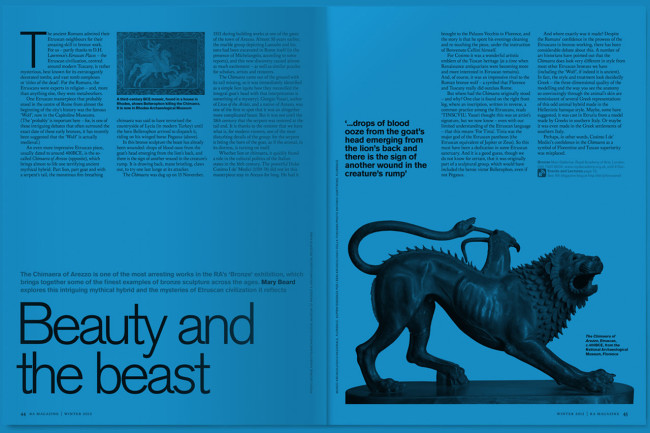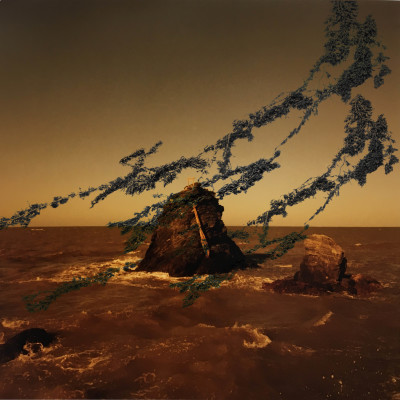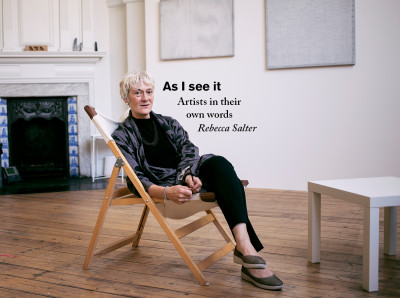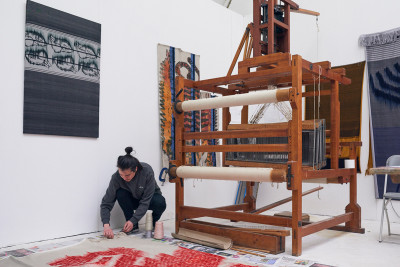How I made it, by Rebecca Salter RA
How I made it, by Rebecca Salter RA
By Gill Crabbe
Published 31 August 2016
Rebecca Salter RA talks about the “uncharted territory” of working in film for Picture the Light, her collaboration with the musician Max de Wardener.
-
From the Autumn 2016 issue of RA Magazine, issued quarterly to Friends of the RA.
Can you describe this work?
It’s a 10-minute film that includes sequences of drawing processes, where you can see ink being painted onto paper, for example. Sometimes these are re-projected onto other drawings or canvases of mine to give a layered effect. I wanted to make a film of drawing that was painterly, with a sense that I’m drawing with time itself. The film features music composed by Max de Wardener.
So it is a collaborative work, which is a departure from your usual works on paper or canvas.
Yes, I think Max composes music like I paint. It’s as if we speak the same language but in different media. When I listen to his music I feel I’m being taken into a space that is opening up and I think that is the same with my work. I’m interested in the films of Len Lye, who scratched and drew on film stock – I like old-fashioned, low-tech simplicity. But because film is uncharted territory for me, I shot in digital and also worked with an RA Schools student, Charlie Fegan, on the editing process.
-
Watch an extract from 'Picture the Light'
The music in this extract is a computer simulation – the final track will be recorded using live performances by musicians.
-
Were your drawings responses to the music or vice versa?
Neither. Max didn’t want to write the music to my images, and I didn’t want to hear what he was doing either. Every now and again I would show him some sequences, but the making of the music and the visuals remained separate. The musicians played both Eastern and Western instruments. My work has strong Japanese influences, as I lived in Japan for six years, where I also explored Eastern philosophy.
What is the work about?
The title is inspired by my experience of exhibiting in 2011 at the Yale Center for British Art, which was designed by the American architect Louis Kahn. Kahn was a master of light – he created structure from the light coming through his buildings. Light only becomes ‘something’ when it’s framed, when it gives negative space its identity, and that framing is also what happens in my film, when the light areas of the paper become that ‘something’.
What techniques did you use?
Everything in the film takes place on the table or on the walls of my studio. One section shows an ink bleed that is very slowly drying (film still, shown above). It is played backwards so that it looks like water is flooding into the paper – creating light areas – but in fact it’s drying. Showing this drying process introduces a contemplative pace.
Were there any surprises in making the work?
There was a certain amount of happy accident. You don’t know what it is going to look like filmed because the camera picks up details digitally that you wouldn’t necessarily notice. Also I had no idea of the potential of computer programmes in film editing, and Charlie had the imagination to tune in to what I was looking for.
What were the challenges of making this work?
As an artist, there is this constant struggle not to become too slick. Real proficiency is being able to unlearn proficiency and go back to a state of not knowing, but from a position of knowledge. I like not knowing what’s going to happen next.
Rebecca Salter and Max de Wardener talk about Picture the Light in an event at the Academicians’ Room on 5 December.
-
-
Enjoyed this article?
Become a Friend to receive RA Magazine
As well as free entry to all of our exhibitions, Friends of the RA enjoy one of Britain’s most respected art magazines, delivered directly to your door. Why not join the club?

-




